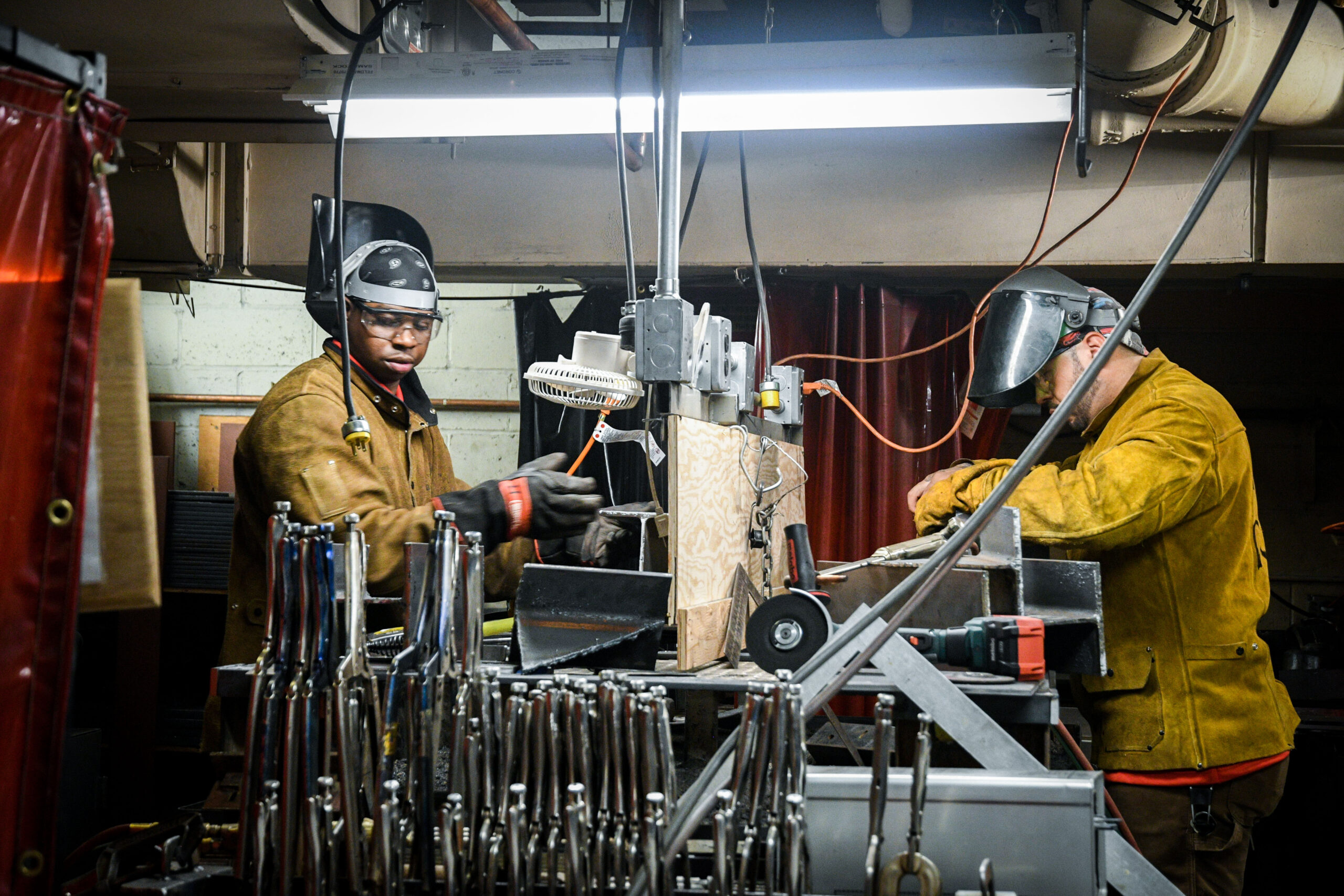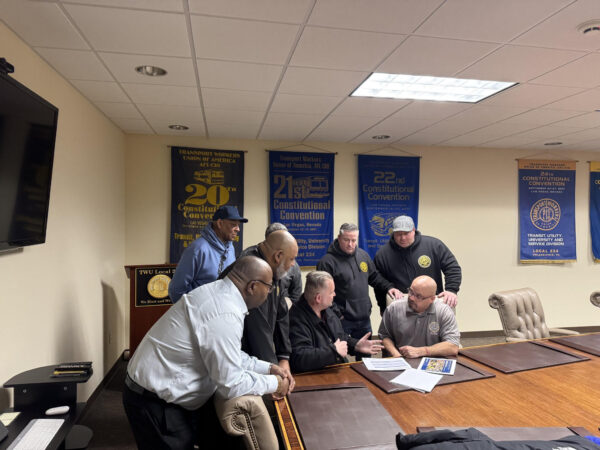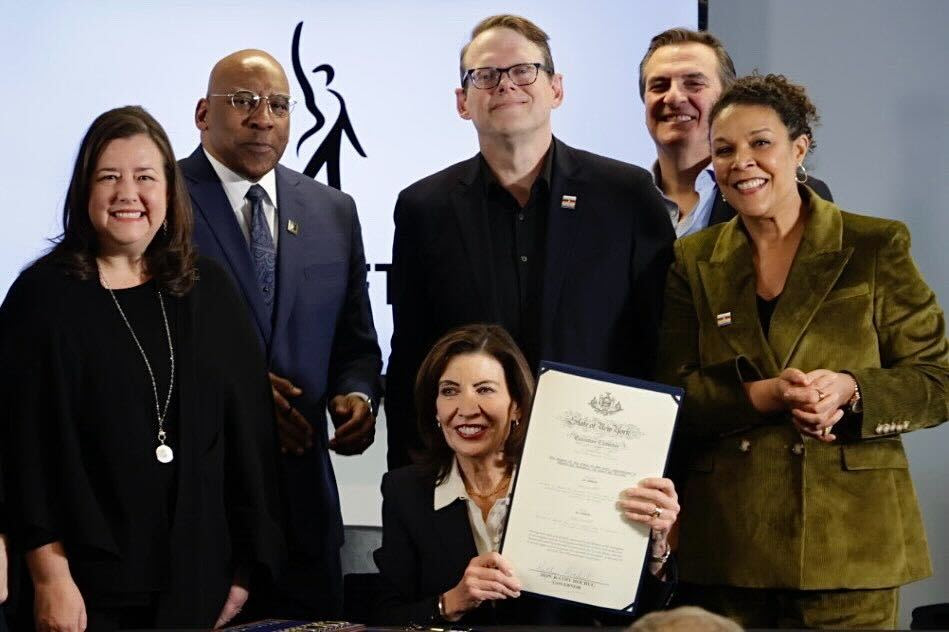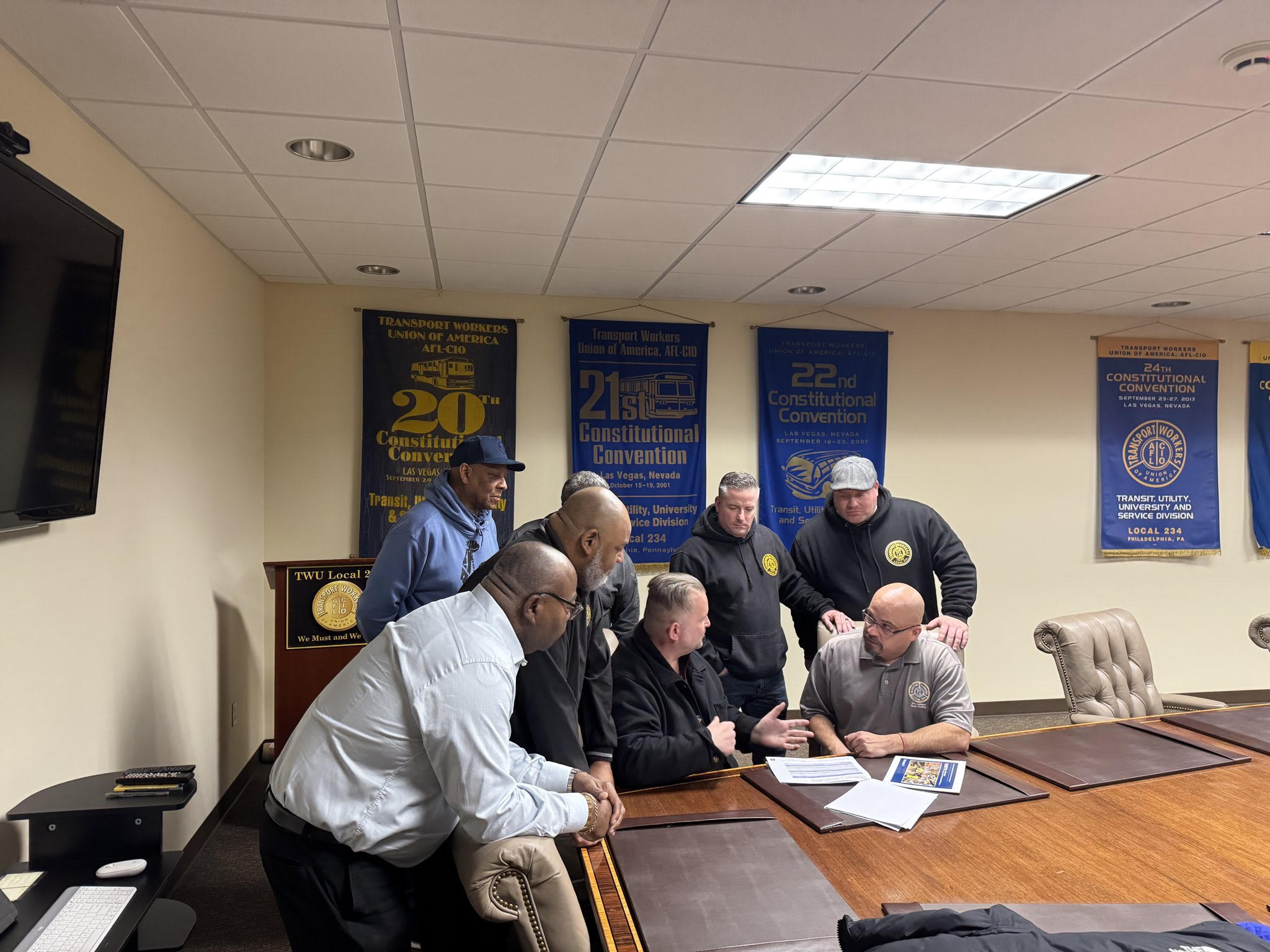New York, NY – The New York City District Council of Carpenters [NYCDCC] functions as the voice for thousands of New York City’s most dedicated and skilled Carpenters, Millwrights, Dockbuilders, Timbermen, Cabinetmakers, Floorcoverers, and Industrial Workers. It consists of more than 20,000 union members from nine individual Locals.

LaborPress spoke to Peter Bennett, NYCDCC Training Director, to learn about the union’s topflight apprentice program.
LP: What are some of the skills the apprentices in the different trades have to develop?
PB: Well, it depend on each trade. Millwrights and Dockbuilders learn how to weld. Carpenters learn how to use chop saws, circular saws, jigsaws, chisels, drills, millwright hammers, hammer drills, and all sorts of different types of tools — including grinders [and] welding tools. They learn how to weld and cut and burn with Oxy-Acetylene torches. All sorts of different things. Cabinetmakers and Interior Systems Carpenters learn how to use table saws, planning machines, and CNC machines, as well as how to read blueprints. High-Rise Concrete Carpenters learn how to form out work with concrete forms. Heavy Highway Carpenters learn all sorts of things about rebar, and concrete forms. Dockbuilders and Timbermen learn sheathing and trenching. There’s lots of different aspects to what we do. We do all sorts of different tasks. Each apprenticeship program has a different curriculum to it.
LP: What is the training/job balance for apprentices?
PB: They usually get called for a class four to five times a year. It’s usually every two, two-and-a-half months we’ll call them in. Depending on what trade you’re in, it’s usually like five to six hundred hours’ worth of classroom training — compared to about fifty-three-hundred hours of on-the-job training — so, they’ll get a lot more experience on the job. We teach them to think as Carpenters. What we try to focus on with them in the apprentice program is the safety aspect of it. And tricks of the trade — how to use tools, work safely, how to read blueprints, how to follow safety guidelines. A lot of that stuff is really the most important. We also motivate them and teach them how to act as apprentices, how to move jobs along, and how to be a positive force on the job.
LP: What are some of the requirements to be accepted into the apprentice program?
PB: You have to have a high school diploma. You have to be 17 or older. We do accept a GED or things like that. If you’re 17, you have to have parents’ permission. You have to have a valid government issued ID, non-expired. Some sort of picture ID that verifies who you are at the time that you pick up an application. For most of the trades you have to have proof of usage of a vehicle.
LP: How does the apprenticeship program address inclusivity?
PB: Well, we have different direct entry formats that we recruit from: NEW [Non-Traditional Employment for Women], Helmets to Hardhats, for example. We’re very diverse. The Carpenters are a very diverse trade. We have inner-city outreach programs and we have our pre-apprentice program — Building Works. We’re for a diverse group of apprentices. All you have to do is apply and we will teach you. It’s like anything. If you put effort into it, you’re going to get rewards out of it. Everybody should have the opportunity to get into a trade, build a rewarding career in the union with a pathway to the middle class and achieve the American Dream.







1 thought on “NYCDCC Apprentice Program: The Pathway to the Middle Class Begins Here”
Good Morning
To whom this may concern you guys need to do a better job organizing the apprenticeship application process. This is the second time I’ve lined up for an application and didn’t get one because people keep showing up at 6:30 -7:00 and cutting the line like if they spend the entire night sitting out waiting. You either need to have security with a sign in book or give out wrist bands to those who come early so there’s no confusion as to who actually spent the night online. This way at 7 you can call out the names 1-25. It’s not fair to lose an entire night of sleep for nothing. If I may make another suggestion instead of just giving out applications how about asking if the individual has they necessary education needed to apply. This way an application is not wasted on someone who doesn’t qualify.